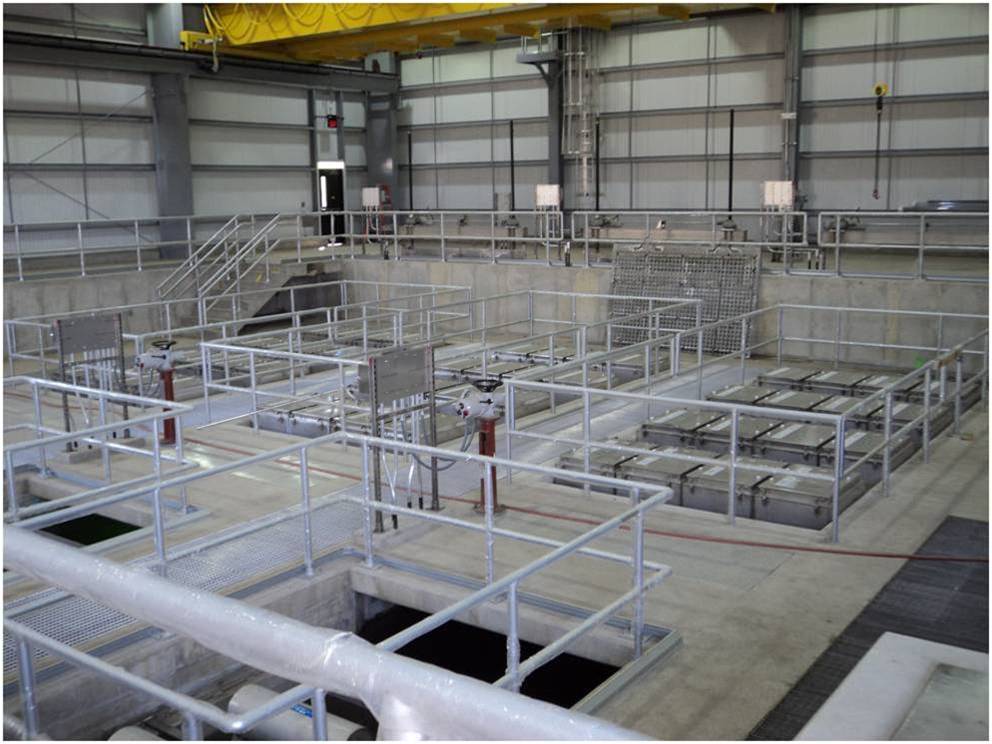Ultraviolet Light Disinfection

One of the most critically important missions of any wastewater treatment plant is to protect public safety and health by properly treating raw sewage. That is certainly no different for the Hartford WPCF – the largest wastewater plant in Connecticut. A key element of achieving this mission is to disinfect the treated wastewater as it exits the plant. This is done during May through September, times when people may likely be out enjoying the Connecticut River boating, fishing, etc. Properly disinfecting the wastewater ensures that no one should get ill from direct contact with the water in the Connecticut River. For comparison, the Connecticut River typically flows at 100’s to 1000’s of times the volume of the Hartford plant, so the plant’s overall contribution to the river flow is very, very small.
Historically the plant disinfected the treated wastewater with chlorine, basically using a similar process as one might disinfect something at home with bleach. A more modern and environmentally sensitive approach is to use light. For wastewater disinfection at the Hartford WPCF, light in the ultraviolet (UV) spectrum is used. Treated wastewater from the secondary process flows through one (or more) of the three channels. These channels are full of banks of specially engineered light bulbs that give off UV light. The UV light provides the disinfection mechanism.
The Hartford UV disinfection system has 1,728 UV light bulbs the provide disinfection. Only a portion of these are in use at a given time. A highly sophisticated computerized control system allows operational staff to vary the number of bulbs in service to meet disinfection limits while minimizing energy use.